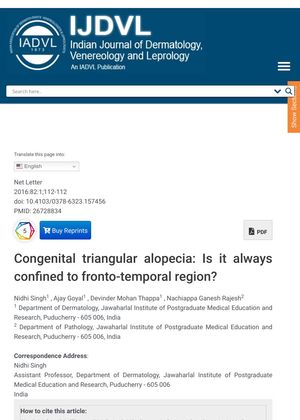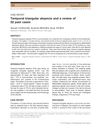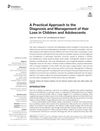Congenital Triangular Alopecia: Is It Always Confined to the Fronto-Temporal Region?
May 2015
in “
Indian Journal of Dermatology, Venereology and Leprology
”
congenital triangular alopecia CTA non-scarring alopecia non-inflammatory alopecia triangular patch oval patch lancet-shaped patch fronto-temporal scalp temporo-parieto-vertex region dermoscopy normal follicular openings vellus hair skin biopsy miniaturized telogen vellus hair follicles perifollicular inflammation hair transplantation hair loss scalp hair regrowth hair follicles

TLDR Congenital triangular alopecia can occur outside the typical fronto-temporal region.
In 2016, researchers Singh, Goyal, Thappa, and Rajesh reported a case of congenital triangular alopecia (CTA) in a 1-year-old girl, which was not confined to the fronto-temporal region of the scalp, as is typically seen with this condition. CTA is a non-scarring, non-inflammatory form of hair loss that usually presents as a triangular, oval, or lancet-shaped patch of alopecia in the fronto-temporal scalp. However, in this case, the alopecia was found in the left temporo-parieto-vertex region of the scalp. The child had been subjected to repeated tonsuring over 1 year in hopes of hair regrowth, but the alopecia persisted. Dermoscopy revealed normal follicular openings and vellus hair, and a skin biopsy showed miniaturized telogen vellus hair follicles with no perifollicular inflammation or scarring. The researchers suggested hair transplantation as a possible treatment option due to the large size of the patch. This case highlighted the rare occurrence of a large triangular patch of alopecia involving the parietal, temporal, and vertex regions of the scalp.



